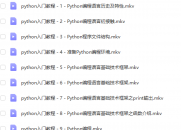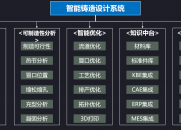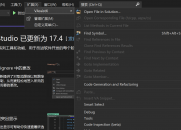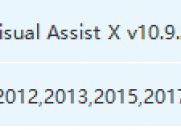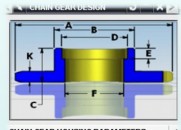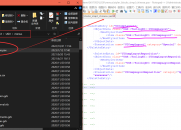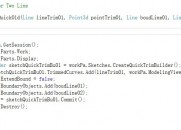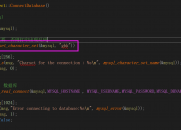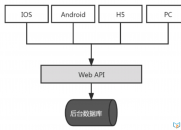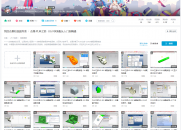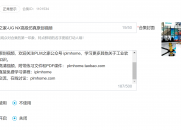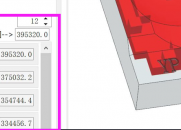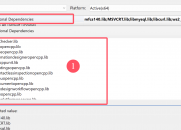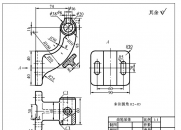|
|
请使用QQ关联注册PLM之家,学习更多关于内容,更多精彩原创视频供你学习!
您需要 登录 才可以下载或查看,没有账号?注册

x
Folders in Object Tree
6 I7 g, I' ^3 w7 H1 N% b* Y: s$ f6 }: W; J8 j6 F: y
From version 14.0, users can arrange the data loaded in the Object Tree using hierarchical structure of folders. A set of new classes and interfaces has been added to the .NET API to support the creation of folders and manage their content.: o. W. x+ z5 P+ U% l' [
The Object Tree contains 3 types of folders:
/ {/ v4 o0 h+ ?3 m3 B4 @8 M! [, a2 L$ @/ P$ z
- Root folder - It is hard coded, cannot be manipulated by the API.
- Main Folders - Categorize the objects by their type. They are represented by the TxMainFolder class. That class implements the ITxMainFolder interface.
, o7 F( Z$ n0 z7 DMain folders are created by the application, they cannot be created or deleted with the .NET API. To access the main folders, call to the MainFolders property of the TxDocument class. To distinguish among the main folders use the FolderType property of ITxMainFolder interface. - Regular folders - New type of folder objects. Represented by TxFolder class and corresponding ITxFolder interface. To create a TxFolder use the CreateFolder method of ITxFolderCreation interface. A parent of a regular folder can be a main folder or another regular folder.
0 ~; B9 w! ?$ |& q: k2 I
Folders, both regular and main, are represented as ordered object collections. Use the methods and properties of ITxObjecTCollection and ITxOrderedObjectCollection interfaces to add model objects as children of a folder or to change the order of the objects within the folder.
5 N$ t' V1 b) ^& D: f: }$ l% X( q/ L: F, b9 c. I( J
TxFrameEditBoxCtrl Updates$ Q- _0 {7 A6 b7 e
% H/ _5 l+ U2 w( W5 XIn previous versions, there were problems editing some of the properties of the control in design time, in the Properties window of the Visual Studio. * b8 ^. o" ^/ C0 q& B" \
Properties like Text, ValidatorType and PickLevel, could not be edited in the Properties window. Others like IsFrameEditorOpened and EnableRelativeToWorkingFrameCoordinates failed to display their values. All these issues are now fixed in version 14.0.
6 v" J! Q8 ^, P- O: O, u6 G, G( ^; z" e8 z2 w; [3 z* ^
To apply the changes in the Visual Studio environment, users need to perform Reset Toolbox on the tab that contains the Tecnomatix controls. 2 r( d+ o5 x$ x e
After that, add the controls again, manually to the tab. (See UI Classes chapter at Tecnomatix.NET.chm)" u; k0 ?* I" n7 |1 q
, |) Q& X* ?; f: n# I+ K" B9 p7 j/ qSimulation Player6 s" @! u* I" q9 Y* ^
Use the JumpToEnd method of TxSimulationPlayer to jump the simulation to the end.
( h+ K, U9 D( B+ L3 j6 Q. }# G( E
) c3 M! ?4 T: { uComponents
* @+ U& @! E/ {" D" X* U) I; F$ jUse the CanOpenForModeling property of ITxComponent to check if it supports modeling.
9 s% K1 U9 | G7 Y z; j% \. @" c& n2 Y8 H* |$ Z9 O4 k
RRS Services8 @0 T, q! N& k) a9 ^ I
Use the GetInverseKinematic method of TxRRSServicesProvider class to compute the inverse pose with respect to the configuration and external axis values.: X m* V/ E3 g0 p9 Z3 }
! b, _# w$ R8 d* O+ J) BControllers9 L Y% v1 X9 P* o
If a custom controller need to be supported in Olp DebUGger, use the SimulationMode property of TxOlpControllerUtilities class to define the simulation mode.* o$ @6 r5 c$ c4 H2 X3 w4 M9 P
A new ITxRoboticMarkupDownloader interface is now available that provides support for downloading one or more robotic programs and operations with simulation markups.5 v9 G( C& t: d! k* P \' I- t" V9 h
& m! R5 t* D" A: ~4 ^/ M |
|
